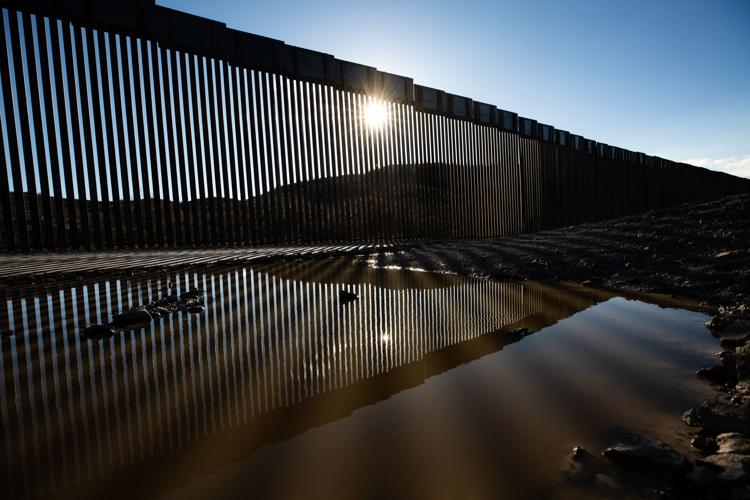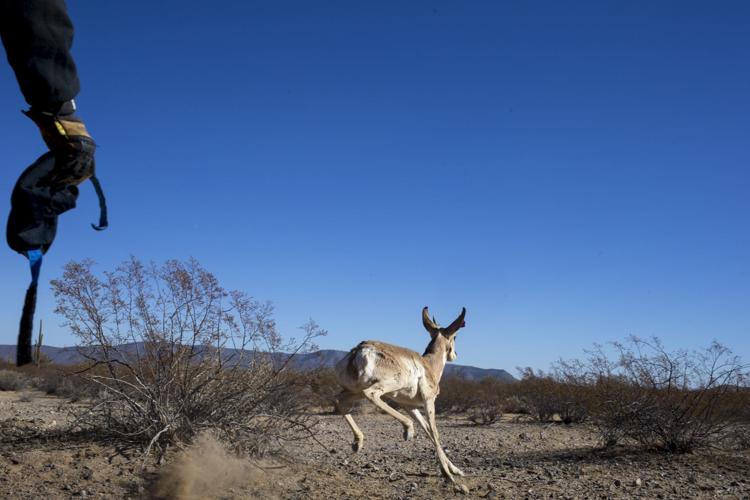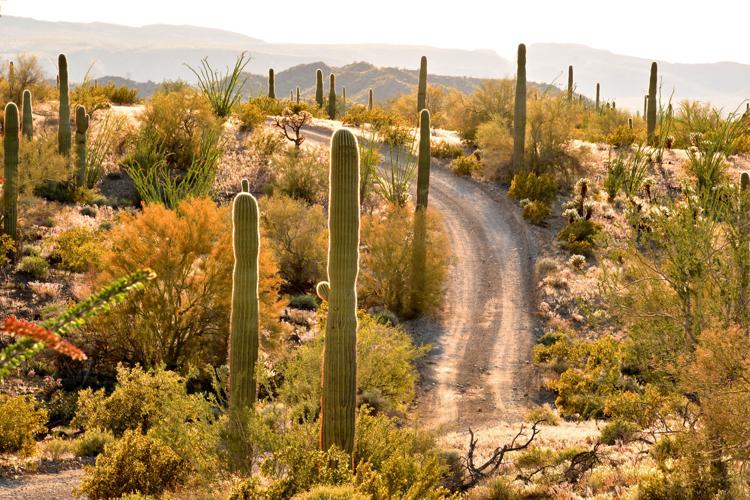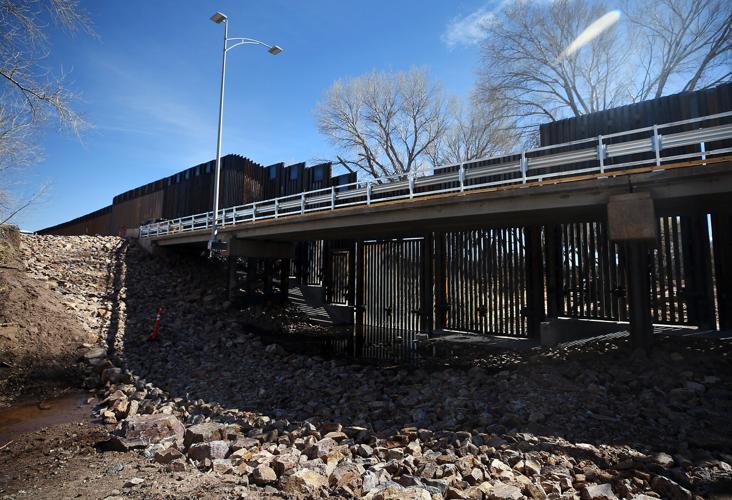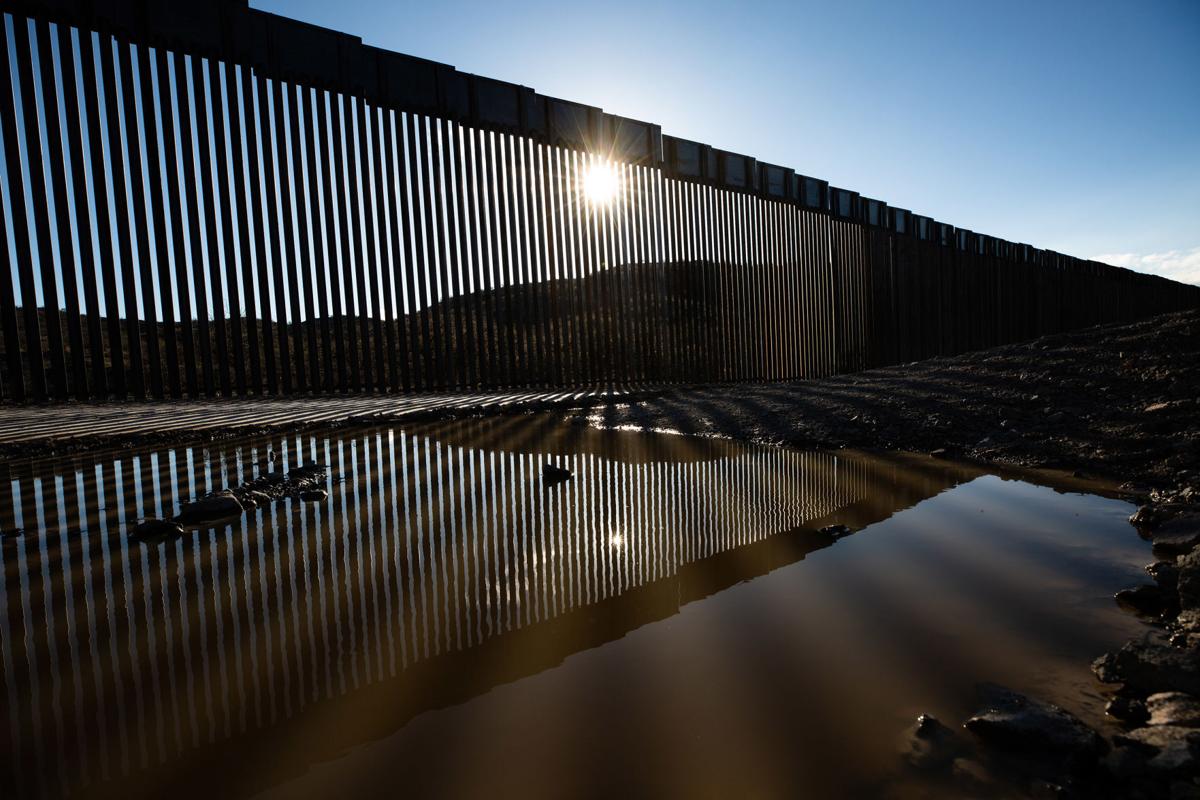Openings intended for wildlife will be put into portions of the U.S.-Mexico border wall — including sections in Arizona — under terms of a settlement in a lawsuit over how the Trump administration paid for new construction.
The deal filed this week in federal court spells out that there will be a passage of 5 feet by 7 feet in the Perilla Mountains corridor in Cochise County to accommodate jaguars and black bears.
The Sonoran pronghorn will get to go through an opening no shorter than 18 feet to be put in the Cabeza Prieta National Wildlife Refuge in Pima County.

A Sonoran pronghorn at Cabeza Prieta National Wildlife Refuge.
The border wall pass-throughs are the result of the settlement agreed to by the federal government to end a 4-year-old lawsuit. It challenged the Trump administration’s use of military construction and other funds, which courts have previously ruled was illegal, to build new border barriers despite the fact Congress never approved use of the money.
From the perspective of the Sierra Club and the Southern Border Communities Coalition, which first sued in 2019, the construction caused extensive damage and affected some threatened or endangered species. The settlement calls for the U.S. Department of Homeland Security to create some breaches in the barrier to allow large animals that have migration patterns along the border to pass through.
There will also be at least 20 passages installed for small wildlife, no smaller than an 8.5-by-11-inch sheet of paper, at various locations along the border.
The federal agency also agreed to open, on a full-time basis, various stormwater gates built into the existing barrier system, also with certain species in mind.
In Arizona, the San Pedro River is specifically included, along with two other areas in Cochise County in the San Bernardino National Wildlife Refuge. There will also be two in Organ Pipe National Monument in Pima County.
As part of the deal, Homeland Security is entitled to install gates that would allow the passages to be closed due to “exigent circumstances or border security operations.’’
It also permits the federal agency to place “wildlife-friendly infrastructure’’ near the passages and other barriers to detect unauthorized entry into the United States.

The U.S./Mexico border wall along the San Pedro River in the San Pedro Riparian National Conservation Area.
Remote areas
The idea isn’t to create new openings for migrants, said Erick Meza, borderland coordinator for the Sierra Club.
“We selected these openings in areas that are remote where we have historically seen not so many migrants moving through these spaces,’’ said Meza.
He acknowledged that, strictly speaking, these openings are large enough so they also could be used by people seeking to cross the border illegally. But it does not mean unrestricted access, he said.
“They will be monitoring with the use of technology,’’ Meza said, referring to the Border Patrol.
“The technology is already there in some of these cases,’’ Meza said, with some spots already within the view of towers with cameras. “This won’t be so much of a change for them.’’
The agreement was designed to keep a certain amount of flexibility in how these passages would be designed, said Cecillia Wang, deputy legal director of the American Civil Liberties Union, which represented the Sierra Club.
One option for openings, she said, would be a Normandy-style fence, essentially a barrier that keeps vehicles from crossing but does not deter wildlife.
That kind of structure, Wang acknowledged, also would allow individuals to cross. But she said it is important to put all that into perspective.
“Congress said ‘no’ to border wall construction in these locations, and presumably had good reasons for doing that,’’ which is why Trump instead illegally diverted the military money, she aid.
“The baseline isn’t that there should be wall here to prevent people and vehicles from going back and forth,’’ Wang said. “The baseline is there never should have been border wall there in the first place.”
Federal border officers have many ways to prevent and detect border crossings “besides building a border wall,” she said.
Pronghorn afraid of being enclosed
Meza said it is important to create these large openings.
Consider, he said, the Sonoran pronghorn.
For most other species, a culvert would be sufficient. Not pronghorn.
“They’re afraid of being enclosed,’’ Meza said. “They are prey. So they like open spaces.’’
The agreement considers the needs of other species that need cross-border access, as well.
For example, it specifically prohibits the use of razor wire. But it does permit barbed wire to prevent cattle from crossing the border.
But here, too, Meza said, the agreement requires it be designed so it doesn’t stop wildlife.

Cabeza Prieta National Wildlife Refuge near Ajo.
So, for example, he said, a barrier could include a strand of barbed wire near the top — high enough to deter cattle but also high enough so that bears and wolves could pass underneath.
Overall, the deal also includes nearly $1.2 billion largely to remediate damage caused by construction.
Doesn’t cover future wall construction
The government also agreed to a process to notify various groups about any future plans for construction as well as provide them with opportunities for input.
Strictly speaking, the agreement does not preclude future border wall construction. It covers only the areas that were financed solely through the illegal diversion.
That, at least on paper, permits the Biden administration and successor administrations to use other lawfully acquired and congressionally approved dollars to erect barriers elsewhere.
But Ricky Garza, border policy counsel for the Southern Border Communities Coalition, said the government has agreed to notify and consult with his group as well as the Sierra Club before any future projects begin. That will provide an opportunity to seek changes to minimize impact, Garza said.
Money going back to defense projects
Aside from the nearly $1.2 billion for mitigation projects, the deal requires that another almost $430 million be refunded to the Department of Defense to go back to the original projects for which the dollars were allocated.
For example, there is $160 million for projects at West Point in New York, $95 million for construction at Holloman Air Force Base and White Sands missile range in New Mexico, and more than $36 million for military projects in Virginia.
That explains why those states filed their own lawsuits against the Trump administration for illegal diversion of funds. Their claims also were settled with the new deal.
Get your morning recap of today's local news and read the full stories here: http://tucne.ws/morning


